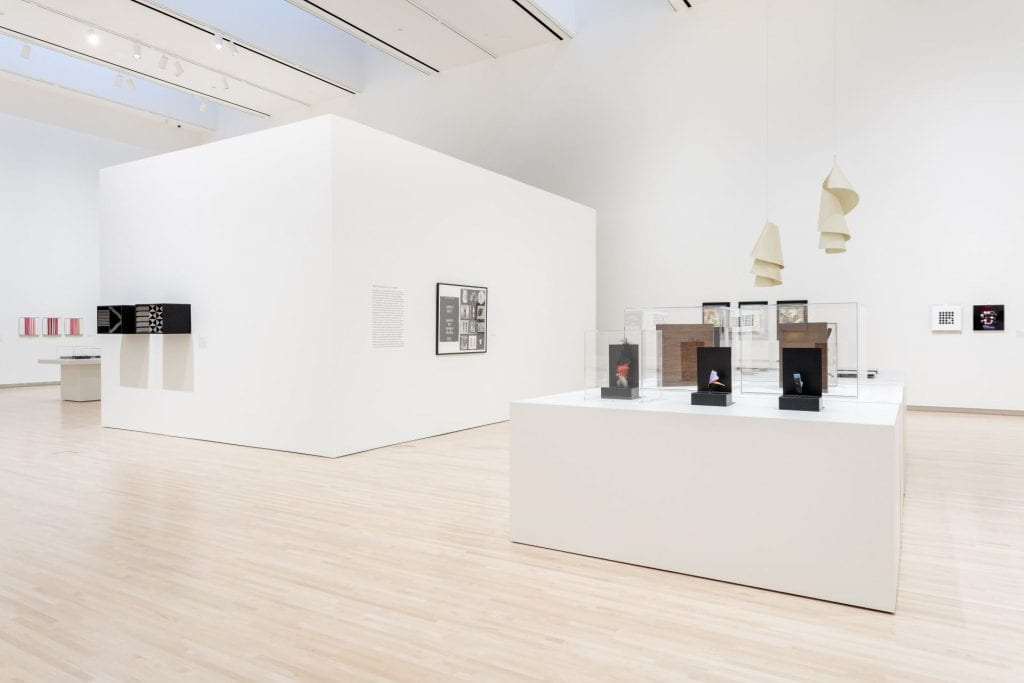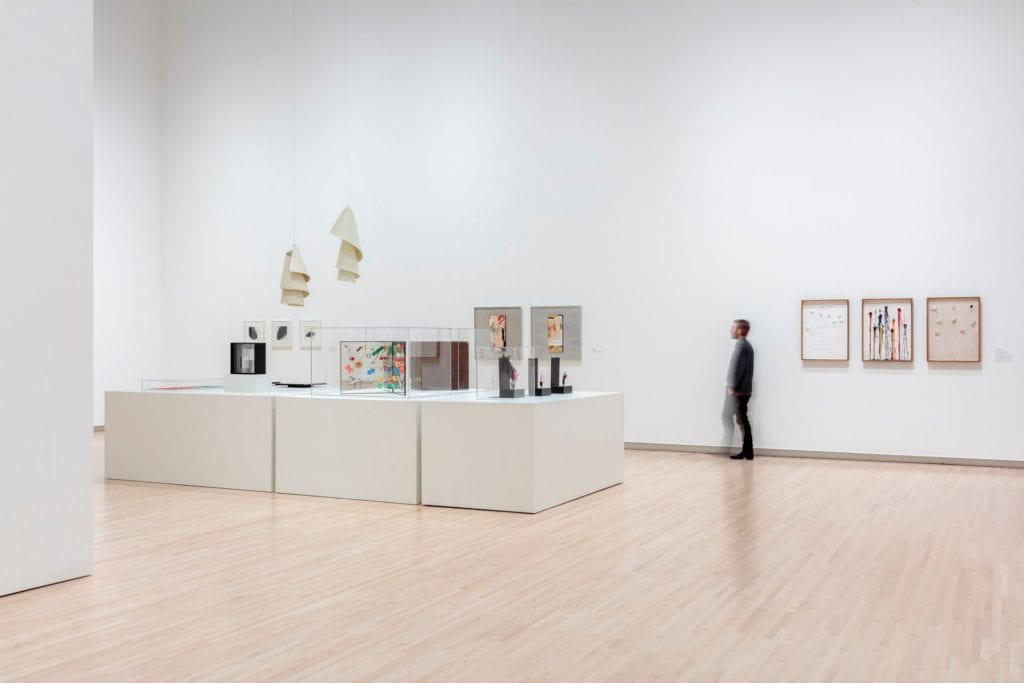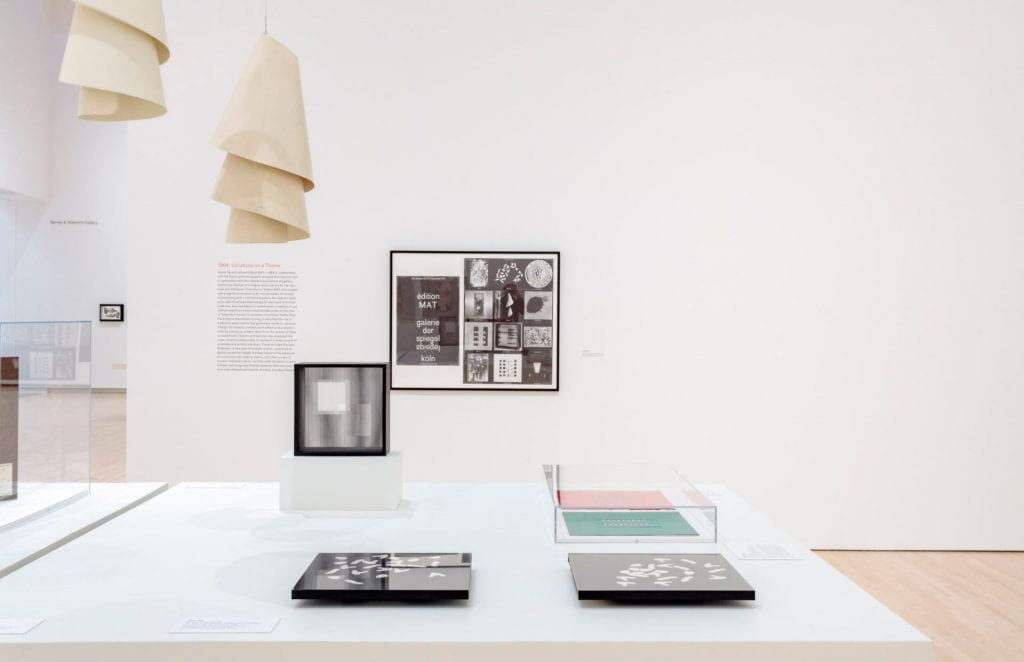Daniel Spoerri revived Edition MAT in 1964 in collaboration with the Swiss artist and graphic designer Karl Gerstner and in partnership with Hein Stünke’s commercial art gallery, Galerie Der Spiegel, in Cologne, which served as manufacturer and distributor. This return of Edition MAT was coupled with a significant revision to its core principles. As a result of partnering with a commercial gallery, the objects’ sales price, which had been fixed equally for each work in the first collection, was now based on market value. In addition, focus shifted away from solely transformable works to the idea of “originals in series,” or variations on a theme. Rather than the artworks themselves moving, it was often the use of a specific serial system that generated variation. Jacques Villeglé, for instance, created one hundred unique abstractions by cutting up posters taken from the streets of Paris as readymades. Spoerri and Gerstner also expanded the roster of participating artists to represent a wider sample of contemporary artistic practices. These included Nouveau Réalisme—a new type of postwar realism embraced by Spoerri as well as Villeglé, that was based on the appropriation of commodity objects, debris, and other scraps of modern industrial culture—and Nouvelle Tendance, a more rational, technologically inflected aesthetic practiced by a loose international network of artists, including Gerstner.
Installation Views
Top: Daniel Spoerri (Swiss, b. Romania 1930), detail of Multiplicateur d’art (Art multiplier) or Spiegelobjekt (Mirror object), 1964. 2 mirrors on hinged wood boards with pairs of found objects, 25 /100, 19 11/16 x 39 3/8 x 3 1/8 in. (50 x 100 x 8 cm). Published by Edition MAT / Galerie Der Spiegel, Cologne. Ludwig Museum, Koblenz, Germany. © Artists Rights Society (ARS), New York / ProLitteris, Zurich.
Installation photography by Johsua White / JWPictures.com






